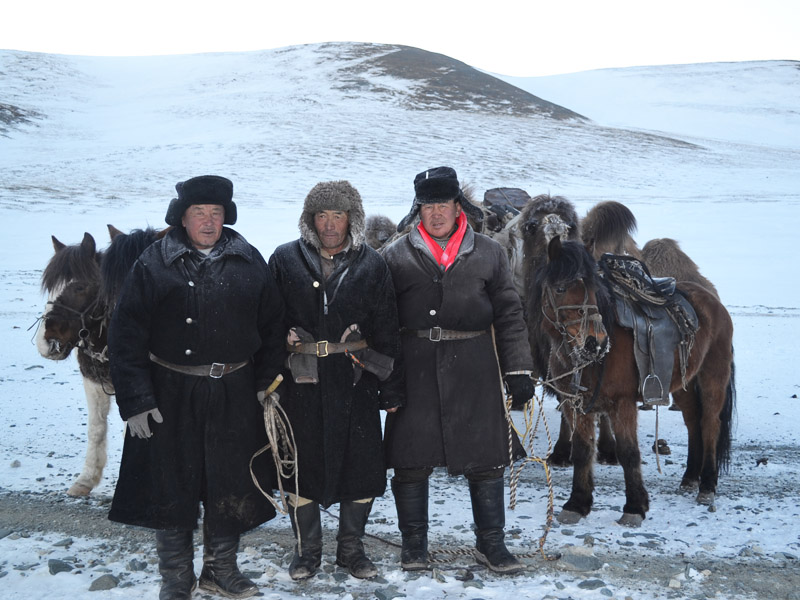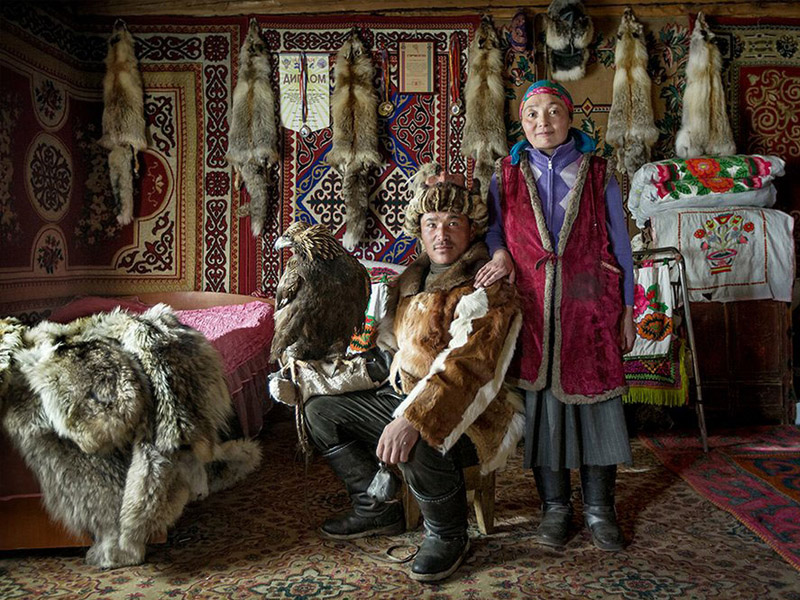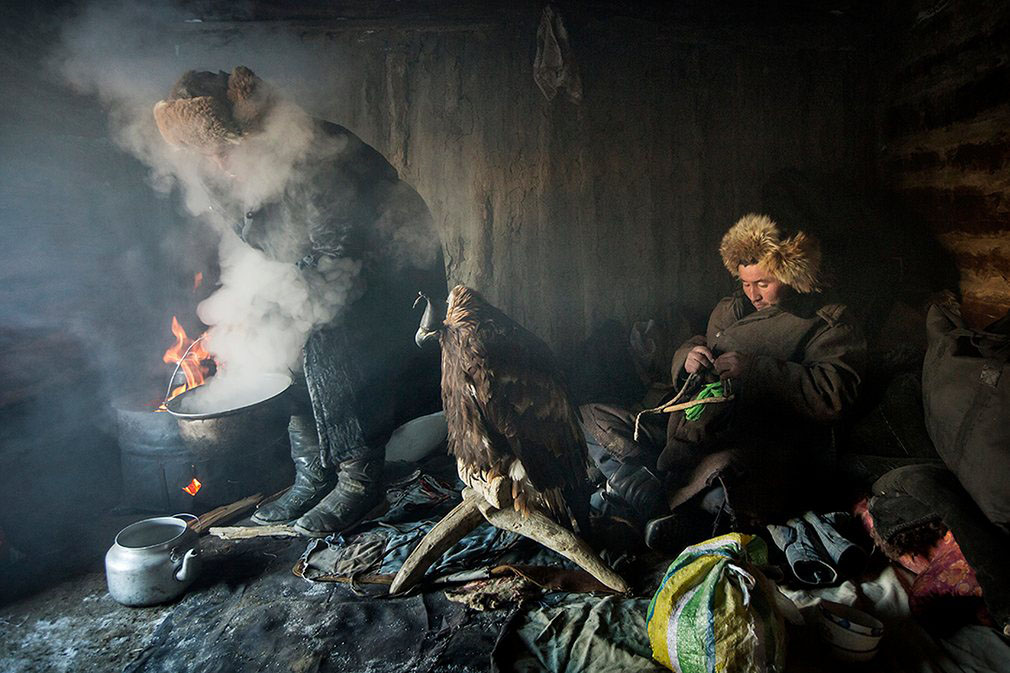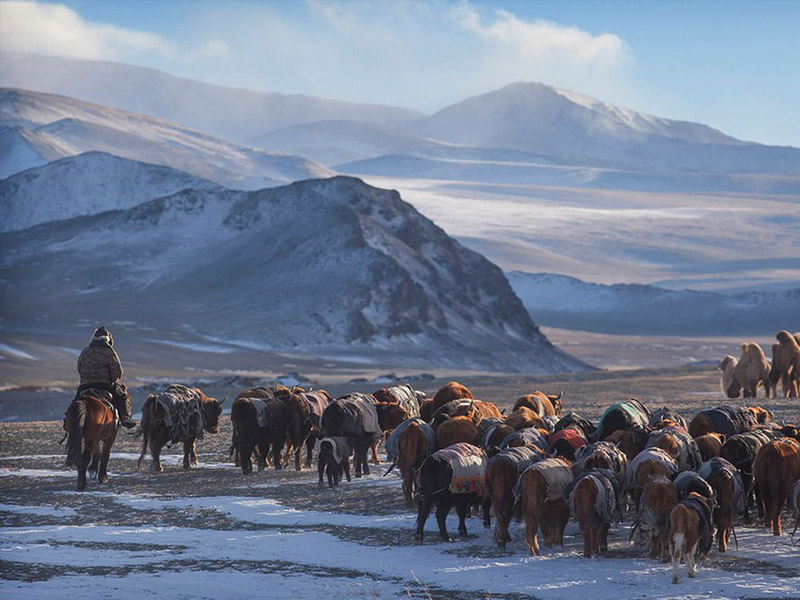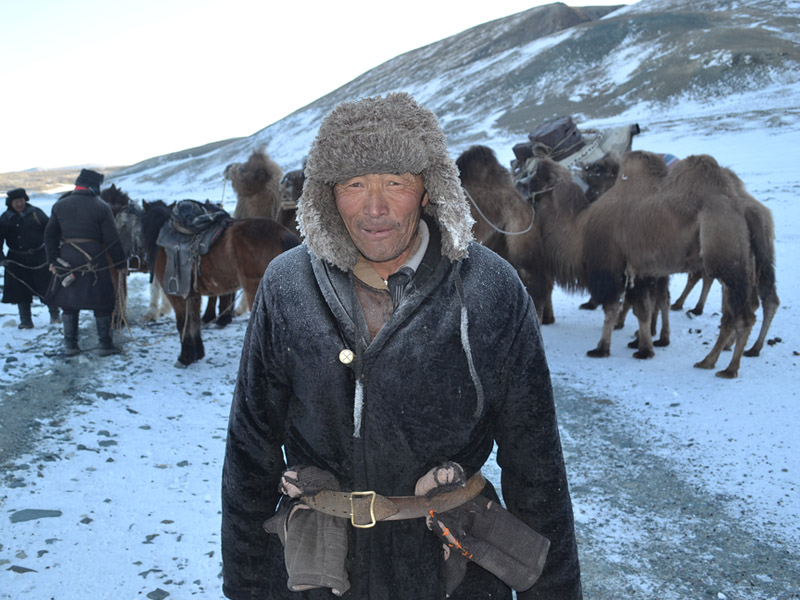Nomads’ Winter Migration
Special interests
Create memorable adventures in Western Mongolia
- Duration 11 days
- Physical rating Medium
- Group size 3-6 Pax
Overview
This is your chance to join Mongolia’s nomadic herders as they embark on their seasonal migration from their winter quarter to their spring quarter. You will be amazed by the breath-taking beauty of winter covered western Mongolia, plus the challenges nomads face in the course of their migration process amidst this appealing yet harsh season. In the far west of this vast yet sparsely populated country - roams the Kazakhs, who are the country’s largest ethnic minority group, speaking their mother-tongue and preserving their unique cultural heritage.
You will live with a Kazakh family and get a glimpse into their nomadic way of life. Learn about their daily chores, such as: preparing food, tidying their home, raising children, tending livestock, and training eagles for hunting.
About winter-spring migration:
Nomadic families move an average of 3 to 4 times annually, and the winter-spring migration is considered to be the toughest. Livestock begin to produce offspring beginning from around March 20th, therefore it is most favorable to have already moved to their spring location by then. The time to move depends on the passing winter conditions. If there was a lack of grass at the winter spot during the year, then families move from there early. If winter conditions were suitable, then some families move after the lunar new year, around February 20th or thereafter. Families can manage to move early because they have already gathered hay and prepared their spring camp during the previous autumn. Another reason for migrating early is because the livestock lose much of their weight and vigor during winter, and it is advantageous to arrive at the destination before the animals lose more strength and are unable to walk. For many nomads, it takes 3 or 4 days to move from their winter camp to spring camp. During these days, it’s not an unusual occurrence for some nomads to lose some of their animals due to weakness. We are giving this explanation because some people may become distressed by such an incident.
Western Mongolia’s spring weather can change suddenly and it can be just as cold as mid-winter during February. Sometimes there are very heavy snowstorms and strong winds. Because of these conditions, you must come well-prepared, especially with good-quality clothes to keep you warm while you capture memorable photos and videos.
Tour Gallery
Price Included
- All meals during the trip
- All accommodations during the program
- Transportation, including gasoline
- All airport transfers
- Eagle hunter Nomadic family
- Local guide
- Cook
- Horse and camel rent
- Museums and cultural performance
- All sightseeing fees
- Local flights (Ulaan Bataar-Ulgii-Ulaan Bataar)
- Satellite phone for emergencies
Price Excluded
- International Flights
- Sleeping Bag
- Travel Insurance
- Charges for excess baggage
- Airport taxes
- Individual equipment
- All alcoholic drinks
- All costs not specified in “Included”
Itinerary
- 4 overnight in local hotel in Bayan-Ulgii
- 2 camping overnights
- 2 family overnights
-
Day 1
Arrival in Ulaanbaatar
Upon your arrival in the capital, Ulaanbaatar, you will be met by our representative and transferred to a centrally located hotel. After checking into your hotel, we will take you on a city sightseeing tour. Ulaanbaatar reveals traces of its historical periods through its blend of modern glass buildings, Soviet-era architecture, TIbetan Buddhist monasteries, and the ger (yurt) districts spread out on the outskirts.
-
Day 2
Fly to western Mongolia
Fly to Ulgii, the capital of Mongolia’s westernmost province of Bayan-Ulgii. This is Mongolia's only Muslim and Kazakh-majority province. Upon arrival, you will be met by your local guide and driver, and transferred to the hotel. Later, meet your guide for dinner and trip briefing. You can discuss what to be aware of, what to bring on the trip, and so on. Upon returning to the hotel after dinner, make sure to charge all batteries and electronic devices you will need for the next few days.
-
Day 3
Meet the family
Head over to and meet the family that will be moving and see their preparation process. Leaving behind their winter quarter during the freezing cold is not an easy task but it is an essential part of their annual cycle. Seasonal migrations for livestock-herding nomads is part of a well-preserved nomadic heritage that has been passed down for thousands of years across the Eurasian Steppe.
First thing to consider when deciding a day to move is dependent on the observations of seasonal weather patterns over the past years. It is forbidden to move between the old moon and the new moon phases because there is a greater chance of unstable weather during these times.
Ahead of moving, clean up around the winter enclosure and throw-away the collected waste at a designated dumping ground. Also, there is a farewell tradition of having milk-tea with nearby families and wishing each other’s safe arrivals at their spring camps with minimum losses.
-
Day 4
First day of moving
We will wake up early for our first day of moving. Packs and furniture from inside the ger (yurt) are loaded onto a large truck and sent first or after the males leave herding their livestock. People with the herd divide into two groups. The first group usually goes ahead with camels carrying food, camping huts, and extra feed for animals that may become exhausted. The second group goes unhurriedly with the herd to let animals graze along the way, so they may arrive late at the night’s camping spot. The first group arrives ahead, and sets up camp and prepares food until the second group arrives.
-
Days 5-6
Continue moving
These two days, wake up early and give extra feed to any animals that appear to be weak. Same as the first day, divide into two groups and the first group goes ahead. The first group sets up camp and prepares food upon arrival at each night’s camping spot.
The third day of moving is the hardest because malnourished animals trying to survive the harsh winter are even more exhausted after walking for two full days. On top of that, we will go about 15 km on the frozen Khar Lake and over the Salt-spring Pass. After the pass, there is a section of gradual descent towards our destination that takes less effort from the animals.
-
Day 7
Last day of moving
Today is the final day of the year’s most arduous and longest migration for nomads and their herds. Finally the family arrives at their spring camping ground after days of herding their livestock through freezing cold temperatures. Here at their prepared homestead, they can rest for a while before taking on their next tasks.
-
Day 8
Say farewell to the family
Celebrate with the family on their safe arrival at their spring quarter. Share a traditional dish called besbarmak, meaning, “five fingers,” because it’s eaten with the hands. This meal is a platter of delicious stewed mutton, horse-meat sausages, all types of fresh vegetables, and steamed homemade dough-rolls sprinkled with onions.
Say farewell to the family and drive to an Eagle Hunter family.
-
Day 9
A day with Eagle Hunters, then back to Ulgii
The lifestyle of hunting with birds of prey has been practiced on the steppes for thousands of years. The Kazakhs are preservers of this ancient tradition - training and hunting with eagles, the largest and most powerful of raptors. Visit Kazakh eagle hunters to witness their special bond between human and bird, and learn about their training methods and how they hunt using golden eagles. You may use this opportunity to take plenty of pictures.
In the evening, arrive at the hotel in Ulgii and take a refreshing hot shower. Enjoy dinner at Ulgii’s finest restaurant.
-
Day 10
Fly to Ulaanbaatar
Take a return flight to Ulaanbaatar. Upon arriving, our representative will meet you and transfer you to the hotel. After check-in and leisure, meet for farewell dinner.
-
Day 11
Departure
Transfer to the airport for your departure flight.
